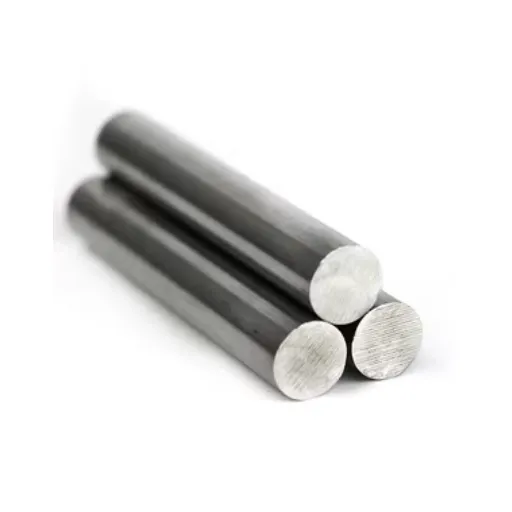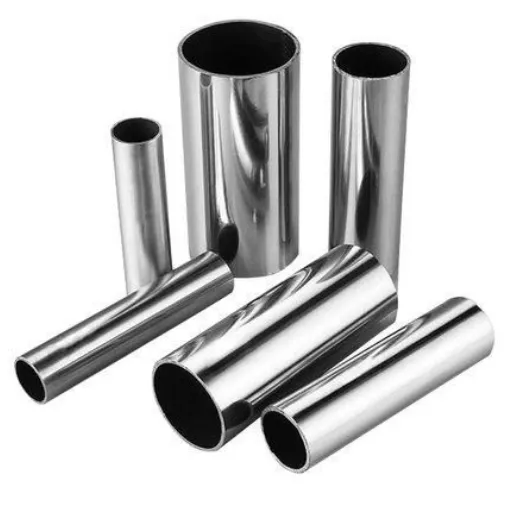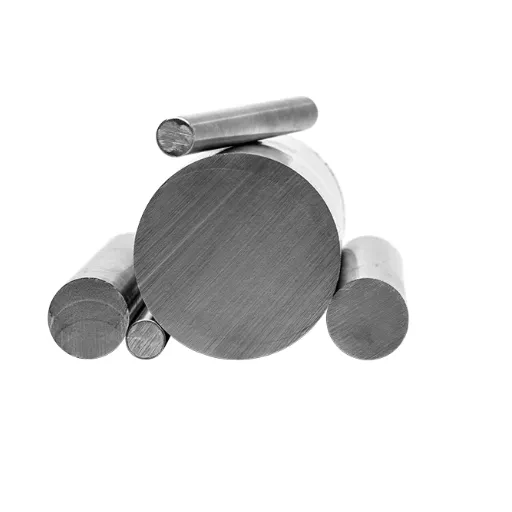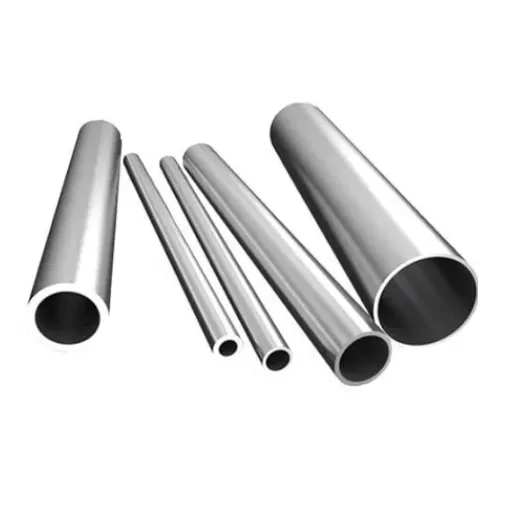When it comes to strength, longevity, and maximum corrosion resistance, only a few materials appear to be of any value. One such material is stainless steel because it has the ability to combine strength with some of the best corrosion-resistant characteristics available in the market. Many industries like manufacturing, construction, automotive, marine, and chemical industries, among others, use stainless-steel plates since they provide very resistant and sustained constructions capable of withstanding extreme water levels. Yet, there is a caveat, not all stainless steel grades are equal—the various types have been designed to meet different requirements. This guide is prepared for a deep analysis of the grades of stainless steel plate corrosion-resistant; these kinds of steel have peculiar features and capabilities necessary for several purposes. Regardless of whether you are a commercial material user, a design engineer or any other interested party who has to make a material choice, then this article has got you all covered. The article intends to break down the intricacies of such advanced materials so that even laymen can comprehend the essence of their use in the current industrial systems better.
Introduction of Stainless Steel
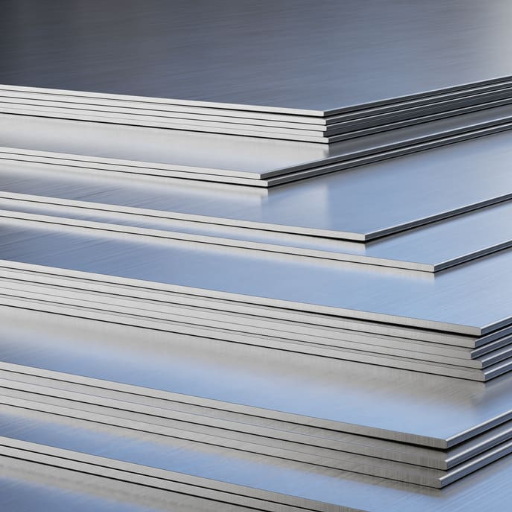
Stainless steel is essentially an amalgamation of iron, chromium and nickel, carbon and molybdenum among other elements. A most commonly visible property of stainless steel is its resistance to corrosion which has been achieved by combining at least 10.5% chromium. As a result of this hexavalent chromium, the surface builds a passive oxide film upon itself, thus protecting the base metal against rust and corrosion. This feature makes stainless steel so strong, highly durable, fully recyclable and adaptable to virtually all uses including building, hospitals, restaurants, and other luxury items. Modern stainless steel is non-invasive and easy to maintain, fully operational in a wide range of designs. This is also due to its strength and resistance to wear and tear which has made it an important material in the industry.
What is Stainless Steel?
A very popular metal alloy, stainless steel is active due to its resistance to reactions. It is lightweight and durable as it is made mostly of iron alloyed with more than 10.5% chromium, allowing itself to passivate. This passive film effectively disrupts the oxidation and provide protection from impurities that occupy in a given environment. Occasionally other elements such as nickel, molybdenum, manganese and nitrogen, are added to improve certain properties for example workability, toughness, or resistance to some forms of the environment, enemies united by severe heat or some forms of acidic attack.
Furthermore, when various types of stainless steel is to be distinguished by its grade and composition of alloy, it is able to yield a high degree of mechanical strength, plasticity and resistance to stress corrosion cracking. Its non-absorbent surface not only resists microbial growth but is also easily made sterile, which is important for sectors like medicine, pharmaceuticals and food processing. As another advantage, the material can be 100% recycled without any change in its original characteristics, as it is interesting in that it has restrained the adoption in various industries that place measures on the recycling and the use of the long-lasting materials.
Types of Stainless Steel
| Type | Primary Alloying Elements | Key Properties | Applications |
|---|---|---|---|
| Austenitic | Chromium, Nickel, Manganese | High corrosion resistance, non-magnetic | Kitchenware, piping, medical tools |
| Ferritic | Chromium | Good corrosion resistance, magnetic | Automotive parts, industrial equipment |
| Martensitic | Chromium, Carbon | High strength, moderate corrosion resistance | Cutlery, surgical instruments |
| Duplex | Chromium, Nickel, Molybdenum | High strength, excellent corrosion resistance | Chemical processing, marine environments |
| Precipitation-Hardening | Chromium, Nickel, Copper | High strength, good corrosion resistance | Aerospace, mechanical components |
Importance of Stainless Steel Grades
Different stainless steel grades ensure the quality and performance of the materials according to specialized fields or applications. The grades are manipulated to show different characteristics depending on the percentage levels of alloys added in the material, as well as in the structure of metals. for example, the austenitic stainless steels exhibit the good resistance to corrosion and high ductility because of the high content of nickel and chromium elements. Therefore, it is widely used in industries such as food, chemical plants, and other structures. On the flip side, the presence of higher carbon in martensitic grades makes it advantageous to those who seek to pursue greater strength and hardness especially in tools such as surgical blades and cutlery.
It is critical for designers to select the right stainless steel class because the wrong choice of material will have disastrous effects on how durable, corrosion-resistant, and capable the items are in complex conditions. Take, for example, the case of duplex stainless steels with their two-phase nature – they render an unusual blend of both strength and SCC (Stress Corrosion Cracking) resistance, thus surpassing austenitic stainless steels suitable for applications in sea or chemical process conditions. Again, a special category consecrates precipitation-hardening grades which are suitable for use in aerospace and mechanical applications due to their property of high strength attainment in the post-heat treatment period.
Exploring Common Stainless Steel Grades
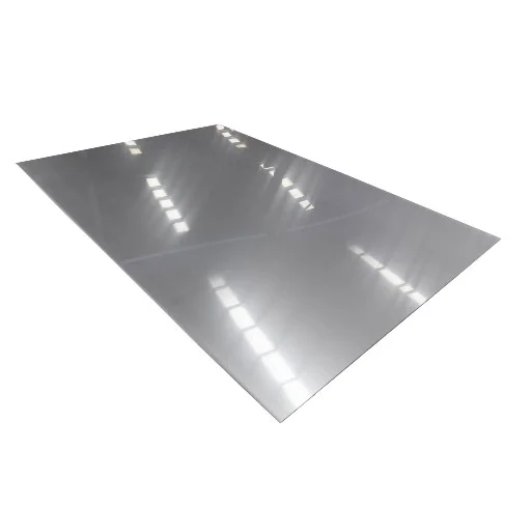
304 Stainless Steel
When we are speaking about the great corrosion resistance, long service life and flexible application, it is necessary to mention 304 stainless steel. This alloy owing to the increased contents of Ni and Cr is more suitable in the cases of exposure to water or weak corrosive media. It is found in the kitchenware, commercial food processing equipment and parts of construction.
316 Stainless Steel
316 stainless steel, on the other hand, is more corrosion-tolerant as compared to the 304 grade stainless steel because of the addition of Molybdenum; they wear out at a slow rate, and offer more resistance to acid corrosion of the crevice and pit types. In applications this alloy finds its application in such areas as marine machine parts, drug production, or chemicals making equipment especially storage containers for corrosive materials.
430 Stainless Steel
430 types include ferrite – very helpful for the oxidation reduction and provides better protection against corrosion with an addition of formability. This steel is widely used in those areas which require appearance finish features such as automotive moldings and appliances at home as the cost is lower.
Overview of 304 Stainless Steel
304 stainless steel is a type of stainless steel alloy that fall under aegis of austenitic stainless steel and is praised for its great corrosion resistance against most media. The fact that it can be coupled with any technique has played a significant role in making it a closely related component of stainless steel. Consisting of about 18% chromium, but estimated to be approximately 8% nickel as well, this type of stainless steel is usually known as ’18/8′ stainless steel. As a result of such a brief composition, not only does it contribute to its hope of withstanding oxidation and grnerl corrosion, it also acts as protection in many environments including the aerospace, marine and food processing industries.
The major distinguishing property of all, 304 stainless steel is its resistance to high temperatures. It endures temperatures as high as 870°C (1,598°F) as continuous temperature and 925°C (1,697°F) as intermittent temperature respectively. Such high reaching material properties assign it as the material of choice to be utilized in heat exchanger fabrication, construction of chemical containers and other high temperatures requirement applications. Moreover, since it is non-magnetic and elongates well, it can be employed in designs that implement complex parts without or with welding.
304 stainless steel is also very sanitary which is yet another reason why this material is so commonly utilized in healthcare, food preparation and drug manufacting. It is also impermeable to corrosion by most acids, bases, and seawater, further broadening its scope of application in various social settings. However, it is important to note that it may be at risk of pitting and crevice corrosion in high chloride content, which brings the need of a careful study of the consequences of using it in such conditions.
Overview of 316 Stainless Steel
316 stainless steel is another austenitic stainless steel alloy that has higher performance with respect to the resistance to corrosion, mechanical strength and the use in difficult situations. This alloy is made up of around 16-18% chromium and 10-14% nickel with 2-3% molybdenum. The addition of molybdenum is very important and increases the resistance to pitting and fatigue cracking, particularly in the presence of chloride and or aqueous.
In addition to the stainless steel 316 being able to resist rust, its elevated temperature performance is also of a high level- with almost everything performing well, i.e. strong and also tough under high temperature conditions. Furthermore, in its soft or annealed structure, it is non-magnetic, which is a property that is greatly demanded in cases of anticipated magnetic corruptive fields or interactions. If required, the material can undergo cold forming in order to delve into its many expanded applications, for example, harsh conditions such as chemical manufacturing, health care units as well as sail boat hardware.
Comparison: 304 vs 316 Stainless Steel
| Parameter | 304 Stainless Steel | 316 Stainless Steel |
|---|---|---|
| Primary Composition | Contains chromium and nickel | Contains chromium, nickel, and molybdenum |
| Corrosion Resistance | Good, but less resistant to chlorides | Superior, resists chlorides and harsh chemicals |
| Molybdenum Content | Not present | Typically 2-3% molybdenum |
| Cost | More affordable | Higher cost due to molybdenum |
| Strength | Suitable for general applications | Higher tensile strength in extreme conditions |
| Heat Resistance | Withstands up to 1,400°F (760°C) | Resists temperatures up to 1,600°F (870°C) |
| Weldability | Excellent weldability | Excellent weldability |
| Applications | Kitchen equipment, auto parts | Marine, chemical processing, medical devices |
| Chloride Resistance | Prone to pitting from chloride exposure | Resistant to chloride-induced pitting |
| Magnetic Properties | Non-magnetic in annealed state | Non-magnetic in annealed state |
| Food Safety Compliance | Widely used in food-grade equipment | Preferred for food processing in salty conditions |
| Durability in Seawater | Limited corrosion resistance | Highly durable in seawater environments |
Corrosion Resistance Properties
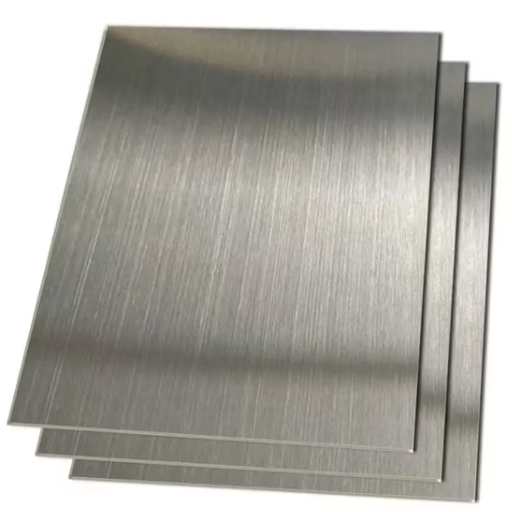
It is important to take into account environmental conditions when evaluating corrosion resistance properties in adhesion to those factors:
- Marine Environments: Resistant stainless steel grades such as 316L are the most durable of all grades under salt water application due to less pitting and crevice corrosion, thanks to an increase in molybdenum content.
- Industrial Settings: It is chemicals such as chlorides and bases that create these changes in performance. For example, the grade 304 under higher chloride concentrations is less effective than grade 316 which is built to resist the intended period.
- Food Processing: Alloy grade 304 and 316 are both used but 316 is the most frequently used material to be used at any service that will include salt, vinegars, or anything that contain high moisture contents, because, its corrosion resistance in aqueous or acrid environments has increased compared to 304 grade.
Good selection of stainless steel with regards to specific environmental conditions promotes increased longevity and the functions of the steel without a lot of tedious maintenance work.
Factors Affecting Corrosion Resistance
- Alloy Composition: Chromium, nickel, and other alloying elements and their content are considerably effective for corrosion resistance. For example, the increase in chromium content accelerates the creation of a stable passive oxide layer, whereas molybdenum improves the resistance in chlorides.
- Environmental Conditions: The subsequent components, chlorides, seawater, temperatures beyond the range and the presence of any bases or acids can contribute to the corrosion of stainless steel materials. This is because constant presence of chloride ions can cause pitting corrosion in some grades of the stainless steel particularly ones with less molybdenum reinforcement.
- Surface Finish and Cleanliness: Uneven surfaces are less exposed to erosion because they keep dirt particles far from protective film. Caring for cleaning and sanitizing also matters in protecting the surface from rapid wear and tear.
- Galvanic Corrosion Risk: When dissimilar metals are in contact within an electrochemical system, there is an increased probability of hydrogen gas reaching other points through an electrolyte. Hence, anode and cathode potential difference influences hydrogen evolution and increases the material corrosion rate. One way to address the challenge is to select metals with close anodic potential differences or separate the two metals using proper dielectric materials e.g. paints.
- Stress Factors: Typically, unfavorable working conditions, particularly pronounced tensile stress due to bending, welding or due to continuous static load, may further encourage stress corrosion cracking especially in the presence of chlorides. Process of heat treatment to the metal can also play a part in this situation, by removing the excess stress.
Corrosion Performance in Different Environments
Corrosion behavior varies greatly depending on the environment and may comprise of such variables as humidity, temperature changes, atmospheric composition, and chemical exposure. There are severe corrosive action tendencies in a marine atmosphere constituted by chloride ions that attack metals like carbon steel or aluminum alloys, thereby increasing its susceptibility to pitting or crevice corrosion. In contrast, arid climates are characterized by sluggish corrosion rates, especially with ferrous materials, due to the less aggressive character of oxidation processes when compared to those conditions of high humidity.
Highly industrialized atmosphere, containing pollutants of SO2 or NOx, must become acidic by absorbing moisture from the atmosphere. Free acid, in swelling after it hits on materials of no resistance toward chemical attacks, will accelerate corrosion processes-would unprotected carbon steel be a good example. Alternatively, operating in controlled and inert atmospheres, such as in aerospace or semiconductor environments, makes it so that material integrity needs to be maintained via special coatings, corrosion-resistant alloys, or cathodic protection systems.
Analyzing Austenitic vs Ferritic Stainless Steel
| Key Parameter | Austenitic Stainless Steel | Ferritic Stainless Steel |
|---|---|---|
| Crystallographic Structure | Face-centered cubic (FCC) | Body-centered cubic (BCC) |
| Magnetic Properties | Non-magnetic | Magnetic |
| Corrosion Resistance | Excellent resistance in various environments | Moderate resistance, lower than austenitic |
| Strength and Hardness | High toughness, moderate strength | Higher strength, lower toughness |
| Weldability | Excellent, widely used in welding applications | Limited, prone to grain growth |
| Thermal Conductivity | Low thermal conductivity | Higher thermal conductivity than austenitic |
| Melting Point | Higher melting point | Slightly lower melting point |
| Ductility | Highly ductile | Less ductile |
| Applications | Chemical, food, architecture, medical devices | Automotive, appliances, heat exchangers |
| Cost | Higher, due to alloying elements | Lower, more economical |
Applications of Stainless Steel
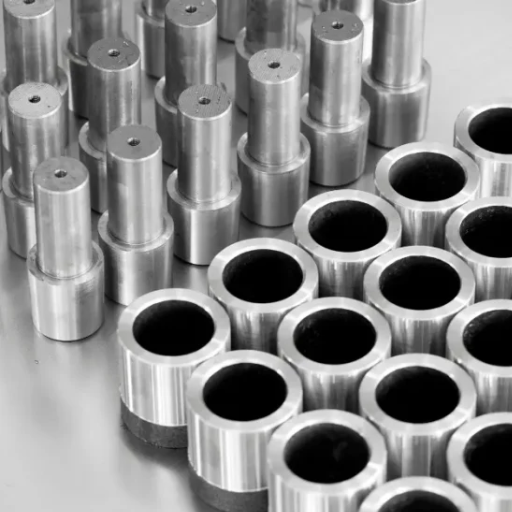
It enjoys pronounced strength, corrosion resistance, and versatility and is extensively used in stainless steel applications, such as:
Construction and Architecture
Structural components, cladding, and roofing applications because of their maturation of durability and aesthetics.
Medical Equipment
Surgical instruments, implants, and medical devices require biocompatibility for easy sterilization.
Automotive and Transportation
Found in exhausts, brightwork, and structural components as it can take mechanical and environmental stresses.
Food and Beverage Industry
With corrosion-resistant and food-contamination-prevention properties, it is great for kitchen equipment, food processing machinery, and storage tanks.
Energy and Industry
Heat exchangers and power plants demand strength and withstand conditions of high temperature and chemical-grade accuracies for applications in chemical processes.
These manufacturing exemplify the adaptability of materials, given that stainless steel has become equally essential in modern engineering and design solutions.
Marine and Coastal Applications
Stainless steel has a major role in the marine and coastal environment because of its offered curse against saltwater and humid conditions. Its high Vanadium content prevents damage through the formation of a protective oxide layer that at rates prevents chloride ions. Types like 316, known commonly as marine-grade stainless steel, consider molybdenum in their constitution to resist pitting and crevice corrosion even more, hence suitable enough for ship fittings, propeller shafts, and docks that have continuous exposure under harsh marine conditions. A grout pad, a seawall, or a bridge can all be provided by stainless steel for coastal structures; the durability of stainless steel gives low maintenance requirements and a cost-effective solution.
Chemical Processing Industries
Icons of materials that withstand highly corrosive environments and extreme hydraulic pressures are largely what the chemical processing industries are looking for. Stainless steels, mainly 304L and 316L grades, find application because these grades have better corrosion resistance, easy fabrication, and strength under harsh conditions. These materials resist attacks from acids, alkalis, and chlorides, thus playing an important role in processes employing vessels, piping systems, and heat exchangers. High-performance alloys like duplex stainless steels are gaining more preference for their great strength-to-weight ratio and resistance to stress corrosion cracking in chloride-laden environments. The investment in advanced alloys resolves the question on durability versus maintenance cost reduction and downtime of continuous production. The concern placed on these metals assures that the chemical processing plants comply with stringent standards, thus enhancing their efficiency and safety.
Food and Beverage Production
Efficient engineering and top-grade materials are the keeps of ensuring product quality maintenance and hygiene and the operators’ fruition in food production and processing industries. Stainless steel with a high content of chromium and nickel is widely used in this industry because of its resistance to corrosion and cleanliness, which are required by strict sanitary conditions. New advances in automation and IoT integration have also brought about considerable improvements in production lines through real-time monitoring and enhanced traceability. Data sources of 2023 proved that clean-in-place (CIP) systems across the world could cut down on the cleaning process for a massive 40%, while simultaneously reducing water and chemical usages and maximizing production uptime. Such innovative systems are the backbone for compliance with health regulations and sustainability goals as producers are keen on improving efficiency while being socially responsible about environmental conservation.
Choosing the Right Stainless Steel Grade
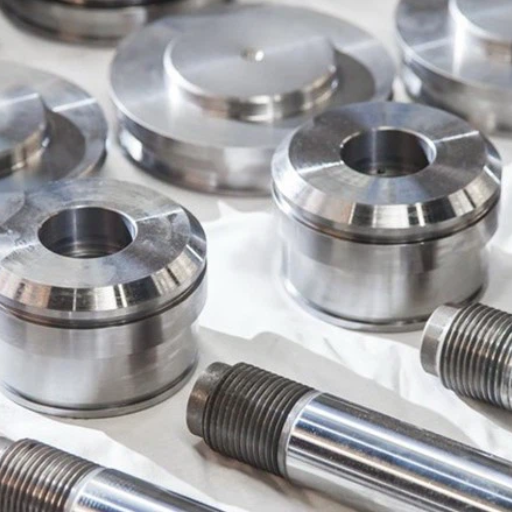
It is crucial that the stainless steel grade is chosen upon evaluation of specific needs of the application. Stainless steel types 304 or 316 are commonly prescribed to environments having notable exposure to moisture or corrosive substances due to their excellent resistance against corrosion. If the situation calls for strength or heat resistance, 310 or 430 grades may be relevant. Your next point to consider is machinability and weldability of the material, and service-life, to make sure it performs well. Standards, specifications of materials in the industry may thus provide you with knowledge toward an informed and reliable decision.
Guidelines for Selection
When opting for materials and design components, it is imperative to incorporate the most recent advancements and data from relevant field areas so as to fully satisfy the requirements of today and those of tomorrow. By way of example, a recent development within the field of material engineering might be seen by giving extra attention to the significance of microstructural analysis in assessing material performance under harsh service conditions. Coefficients of thermal expansion, tensile strength, and fatigue resistance should all be considered in high-stress environments. Emerging alloys with an outstanding ability to resist wear and resistance to lightweight applications are now gaining momentum in the industry as a better option. Always make sure that any published database, recent publication, or updated standard is considered when selecting alternatives so that the modern safety and efficiency benchmarks can be met.
Cost Efficiency Considerations
In assessing the cost-effectiveness of any material selection, the purchase price of the materials is only one element on the balance; life-cycle cost must be included also, namely expenses for maintenance, performance during use, and costs involved in potential recycling or re-use. Statistics show that while advanced composite materials may cost more upfront, they reduce the long-term costs by exceptional service life and hence lower expense for repair or replacement. With increased technological advancement in processing methods, the use of recycled materials in production processes is becoming an alternative to be considered seriously once again. A comparative study on the availability of materials and regional manufacturing costs will direct one to possibilities in cutting the overhead without compromising on quality. Enough information along given supply chain trends and sustainability metrics will bring consolidated reasoning toward setting the performance target within the set budget.
Industry-Specific Recommendation
For the renewable energy industry, the use of predictive tools in supply chain management can greatly improve operational efficiency. By taking advantage of the power of state-of-the-art machine learning, companies can forecast variations in demand and scale inventory so as to minimize waste and storage expense. Recent statistics show AI-based demand forecasting rollouts led to about a 30% reduction of errors in the supply chain, resulting in more precise allocation of resources. To track new materials such as next-gen photovoltaics or bio-based composites for wind turbines also ensures production stays cost-effective and environmentally sound. Therefore, this strategic integration of technological developments with market dynamics strengthens a competitive edge while bearing sustainability goals in mind.
Reference Sources
- Key Findings:
- Surface roughness significantly impacts the corrosion rate of stainless steels in saline environments.
- Corrosion progressed prominently from pits generated during grinding, with 430 stainless steel showing the highest corrosion rate.
- Key Findings:
- Tempering improved toughness by 150% compared to quenching but reduced ultimate tensile strength by 6%.
- Microstructural analysis revealed refined grains and the absence of martensite in tempered samples, enhancing ductility and reducing hardness.
Frequently Asked Questions (FAQs)
What are the common stainless steel grades used for corrosion resistance?
Common stainless steel grades that are generally accepted as resistive to corrosion are 304 and 316 stainless steel. The adb stock; 304 stainless steel is often applied to different applications because of its excellent corrosion resistance and formability. Grade 316 stainless steel provides better corrosion resistance to chlorides by virtue of molybdenum content. Then, there are other grades such as grade 317 stainless steel that can be applied where even more corrosive resistance is required by an environment. It is advantageous to understand all these aspects of the grades: it will help you correctly select the material suitable for your work project.
How does 304 vs 316 stainless steel compare in terms of corrosion resistance?
The prime difference standing between stainless steel of 304 and 316 is composition, and secondly, corrosion resistance. Being austenitic stainless steel grades, 316 stainless steel contains more molybdenum; this makes it more resistant to corrosion in aggressive environments and particularly so for marine applications. Less expensive is the 304 stainless steel, making it suitable for many applications, but it will not stand up nearly as well in highly corrosive settings as 316 is. Hence, given the saltwater and chemical exposures, 316 stainless steel usually is somehow said to be the better choice.
What is martensitic stainless steel and its applications?
Being martensitic stainless steel, it is high in strength and hardness and tends to be named for this very reason. 420-grade stainless steels fall in the category and can be used when high wear resistance is needed, for example, cutlery, surgical instruments, and some industrial equipment. Martensitic types exhibit theoretically high corrosion resistance than the relatively soft types of austenitics, such as 304 and 316; practically, on the contrary and certainly, they are not more resistant. Therefore, deciding upon martensitic stainless steel must take into account some additional factors of the application, chiefly regarding corrosion resistivity and mechanical properties.

